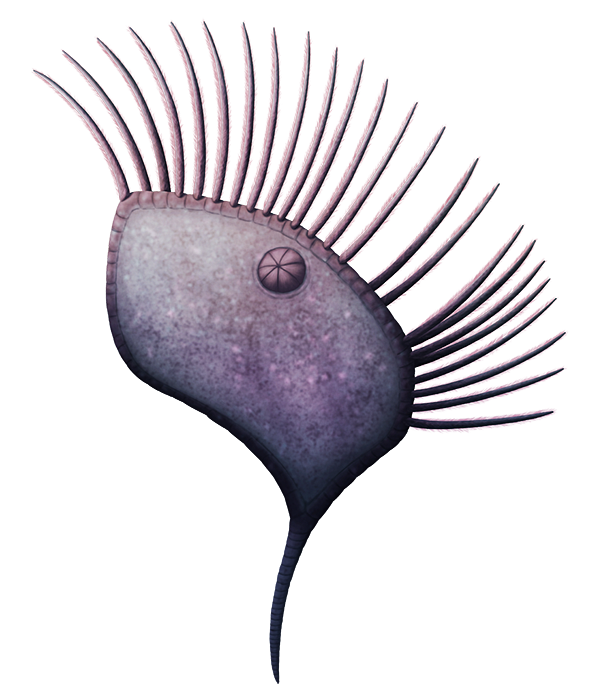While most modern echinoderms display the group’s characteristic five-way symmetry, there were plenty of much much stranger-looking forms back during the Paleozoic.
And some of the most confusing of them were the paracrinoids, which evolved an incredibly diverse range of body shapes during their group’s relatively short 40 million year existence during the Ordovician.
Despite the name these echinoderms weren’t particularly closely related to true crinoids, instead being part of a completely extinct lineage known as the blastozoans. Their ancestors had been radially symmetric, but paracrinoids largely abandoned that body plan, instead developing irregularly shaped and often asymmetric bodies ranging from round to flattened. They had between two and five “food grooves” on their upper surfaces, derived from the ambulacra, lined with numerous feeding appendages along only the left side of each.
They were shallow-water animals, living either attached to the seafloor by a long stem or anchored into the sediment by a shorter one, suspension feeding with their appendages and transporting the food particles towards the mouth located between the bases of the food grooves.
(…And speaking of mouths, some paracrinoid species appear to have had two of them.)
Heckerites multistellatus here lived around 458-445 million years ago, during the Late Ordovician. It inhabited the then-subtropical seas of the Baltica region, with fossil material known from what is now Estonia, southeastern Norway, and northwest Russia.
About 10cm tall (4″), it lived on the seafloor in sheltered waters protected from strong waves by large reefs, and is unusual even among its weirdo relatives for features such as retaining feeding appendages on both sides of its food grooves – although irregularly arranged and with fewer on one side than the other. Its body was shaped rather like a flattened bean, with two food grooves diverging from roughly the centre of the top margin, chunky skeletal plates forming a border around its edges, and a short stem at is base.
It also had an unusually large “anal pyramid” on the opposite side of its body from its mouth, and this may have been used for respiration as well as waste expulsion, similar to modern sea cucumbers.

